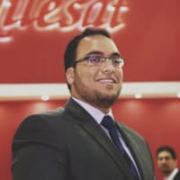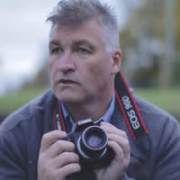

Nagios XI and Veeam Data Platform are powerful tools in the field of IT monitoring and data management, competing primarily in network monitoring and data backup and recovery, respectively. Nagios XI holds a distinct advantage in network adaptability and flexibility with strong community support and plugin versatility. Veeam Data Platform has an edge in robust features for instant and reliable data recovery and replication.
Features: Nagios XI is known for customizable plugins, an active user community, and flexible network monitoring capabilities. Veeam Data Platform features include instant VM recovery, efficient data replication, and consistent backup performance.
Room for Improvement: Nagios XI could advance by enhancing clustering capabilities and simplifying its configuration processes. Veeam Data Platform could improve its support for physical servers, better integrate with cloud services, and streamline its complex licensing model.
Ease of Deployment and Customer Service: Nagios XI has a complex initial setup but is complemented by active community assistance and responsive technical support. Veeam Data Platform provides user-friendly deployment in virtual environments and high-quality professional support services.
Pricing and ROI: Nagios XI is cost-effective, offering both free and paid versions that provide substantial value especially for small to mid-size setups. Veeam Data Platform, despite being more costly, offers significant ROI with its rich features and efficiency in backup and recovery solutions.
The escalation from first, second to third tier is sometimes very long-lasting, but the resolve rate is quite high.
I would rate their technical support a 10 out of 10.
Most cases are handled perfectly.
If the user interface isn’t presenting data well, it becomes difficult to manage when scaling.
Integration with other vendors is also seamless.
In order to scale Veeam Data Platform, we have to pay a lot more money.
It is very stable.
There are no issues with stability in Veeam Data Platform.
Many tools have poor user interfaces, making them hard to manage and navigate.
The GUI could be improved. It's a bit too basic.
Reducing it by 20% would make it more accessible to a broader range of customers.
Additional features expected in the next release to make it even better, most parts are on the way, and the AI integration should be improved.
Compared to IBM, Veeam Data Platform is simpler but brings some challenges with automation in backup and Oracle backup configuration.
We are using the free, open-source version.
The pricing for the Nagios XI product is good and better than other solutions.
I believe it is not expensive; it's the regular price.
Veeam Data Platform is more expensive than OpenStack because we pay for it in US dollars, while we pay for OpenStack in Egyptian pounds.
A reduction of 20% in the current cost would make the solution more attractive to clients.
Nagios XI simplifies our setup and reduces the time spent configuring monitoring tools.
The alerting system is very effective.
The platform is user-friendly, comprehensive, and compatible with numerous market solutions, including virtualization and bare metal servers.
The most important aspect of this platform is data security with immutable data in the storage.
Veeam Data Platform provides me with the most useful features such as application restore, single file restore, backup and replication, and continuous replication.
| Product | Market Share (%) |
|---|---|
| Veeam Data Platform | 0.9% |
| Nagios XI | 3.6% |
| Other | 95.5% |


| Company Size | Count |
|---|---|
| Small Business | 22 |
| Midsize Enterprise | 17 |
| Large Enterprise | 21 |
| Company Size | Count |
|---|---|
| Small Business | 216 |
| Midsize Enterprise | 99 |
| Large Enterprise | 138 |
Nagios XI provides monitoring of all mission-critical infrastructure components, including applications, services, operating systems, network protocols, systems metrics, and network infrastructure. Third-party add-ons provide tools for monitoring virtually all in-house and external applications, services, and systems.
Nagios XI uses a powerful Core 4 monitoring engine that provides users with the highest levels of server monitoring performance. This high degree of performance enables nearly limitless scalability and monitoring powers.
With Nagios XI, stakeholders can check up on their infrastructure status using the role-based web interface. Sophisticated dashboards enable access to monitoring information and third-party data. Administrators can easily set up permissions so users can only access the infrastructure they are authorized to view.
Nagios XI Benefits and Features
Some of the benefits and top features of using Nagios XI include:
Reviews from Real Users
Nagios XI stands out among its competitors for a number of reasons. Several major ones are its integration options and monitoring abilities, as well as its alerting features.
David P., a senior DevOps engineer at EML Payments Ltd, writes, “We use Nagios as a network discovery tool. We use Nagios to maintain our uptime statistics and to monitor our services. It has allowed us to be much more sophisticated in our monitoring and alerting.”
An IT-OSS manager at a comms service provider notes, “Nagios XI has a custom API feature, and we can expose custom APIs for our integration. This is a great feature.”
Veeam Data Platform is designed for modern data management, providing secure backups, intelligent data insights, and resilience. It ensures data is protected, recoverable, and manageable across complex environments, supporting business continuity effectively.
Veeam Data Platform stands out with its robust capabilities in data protection, orchestrated recovery, and efficient management. It offers a simple interface while ensuring data security and availability, which is critical for businesses. The platform's compatibility with virtual machines, databases, and applications across VMware, Hyper-V, and cloud environments makes it a versatile choice for backup and disaster recovery strategies. Users gain confidence from its performance, from secure backups to facilitating effective infrastructure monitoring.
What are the key features of Veeam Data Platform?Veeam Data Platform is widely implemented by industries needing robust disaster recovery plans and data management solutions. It is particularly valuable in environments utilizing hybrid cloud solutions, protecting mission-critical workloads, and ensuring business continuity. Businesses leverage its capabilities to safeguard data integrity and facilitate long-term retention through efficient infrastructure management.
We monitor all Cloud Monitoring Software reviews to prevent fraudulent reviews and keep review quality high. We do not post reviews by company employees or direct competitors. We validate each review for authenticity via cross-reference with LinkedIn, and personal follow-up with the reviewer when necessary.